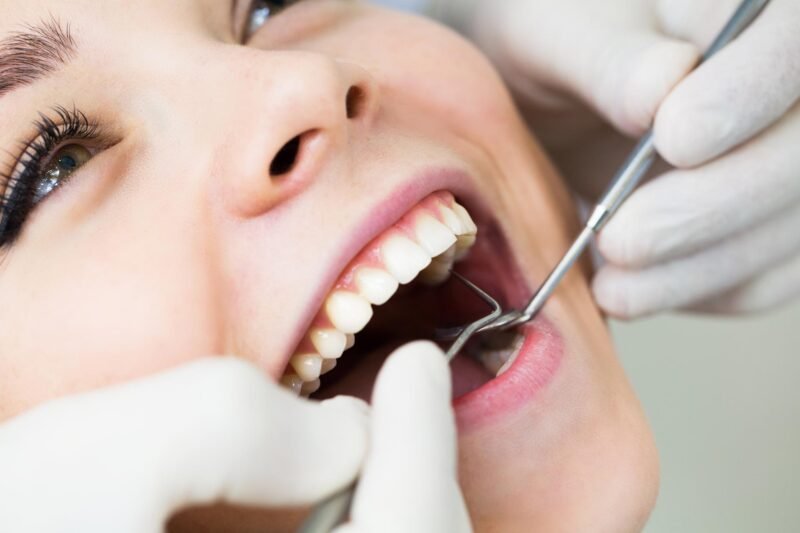Most people at some point in their lives will deal with cavities, a common dental issue. Although surface cavities are well-known, interproximal cavities—cavities that form in between teeth—are just as common. Because these cavities can be difficult to find, treatment may be put off and complications may arise. We will examine the causes, preventative measures, signs, and available treatments for interproximal cavities in this extensive guide. You can maintain good oral health and stop cavities from forming between your teeth by being aware of these important factors.
Causes of Interproximal Cavities
Interproximal cavities, or cavities in between teeth, are mostly caused by poor oral hygiene habits. While many people clean their teeth religiously, many also fail to floss properly and on a regular basis. The interdental gaps are left empty by this negligence, which encourages the growth of cavities by storing food particles and plaque there. Since the space between teeth is thought to make up around 35% of the tooth surface, it is important to pay attention to this area when doing normal dental care. If plaque is not treated, it feeds on the remaining carbohydrates in the mouth and transforms them into acids that erode the enamel and cause cavities.
Prevention From the Cavities
Maintaining proper dental hygiene habits is essential to preventing interproximal cavities. You may drastically lower your risk of cavities between your teeth by implementing the following measures into your everyday routine:
i. Brushing Technique
Brush your teeth with a soft-bristle toothbrush and fluoride toothpaste at least twice daily. Use a gently circular motion while holding the toothbrush at a 45-degree angle. Make sure to thoroughly cover the front, back, and chewing surfaces of your teeth for at least 2 minutes per session. Remember to brush your tongue, as it might harbor bacteria that lead to cavity development.
ii. Flossing
Flossing is an important step toward preventing interproximal cavities. Make it a practice to floss at least once a day, paying specific attention to the back molars, which are more prone to cavities due to pits and grooves. Use a zig-zag motion to clean between all of the teeth in the upper and lower arches. If traditional flossing is difficult for you, consider using water flossers or interdental brushes instead.
iii. Dental Sealants
Dental sealants give an extra layer of protection against cavities, especially on the molars. It is advisable to have sealants as soon as the first and second primary molars appear. These plastic coatings produce a smoother surface, making plaque and bacteria simpler to remove during brushing and lowering the chance of cavity formation.
iv. Dietary Modifications
Limit your intake of sugary and acidic meals and beverages, as they promote enamel erosion and cavity formation. Choose tooth-friendly items such as carrots, apples, and celery to help clean your teeth naturally. Additionally, limit between-meal snacking to prevent the frequency of acid attacks on your teeth.
v. Regular Dental Check-ups
Regular dental exams are required for the early detection and prevention of interproximal cavities. Schedule biannual visits to your dentist for expert cleanings, inspections, and any required X-rays. Your dentist can remove plaque, detect potential cavities, and make specific suggestions for good oral health.
Symptoms
Interproximal cavities might be difficult to identify until they have spread extensively. However, knowing the following symptoms can assist you in seeking timely treatment:
i. Tooth Sensitivity
Interproximal cavities frequently cause greater tooth sensitivity, particularly when exposed to hot, cold, or sweet meals. If you have persistent sensitivity, it may suggest the presence of a cavity between your teeth.
ii. Toothache
Any persistent tooth pain should be checked by a dentist. A toothache, especially while chewing, may indicate an interproximal cavity that requires care.
iii. Visible Signs
As interproximal cavities progress, you may notice dark spots or holes on the affected teeth. These visible signs indicate advanced decay and the need for immediate treatment.
iv. Pus Formation
In severe situations, an abscess can form in the cavity, causing pus to accumulate. Pus development is a strong signal that the disease has advanced substantially and requires immediate dental care.
If you notice any of these symptoms, make an appointment with your dentist for a complete evaluation and suitable treatment.
v. Treatment
The treatment method for interproximal cavities is determined on the severity of the decay. Early identification enables less invasive treatment choices, however severe decay may necessitate more intensive procedures. Common treatments include:
vi. Recalcification
If the cavity is detected early and has only progressed halfway or less into the enamel, your dentist may propose recalcification. This procedure involves applying fluoride gel to the afflicted area to remineralizer and reinforce the enamel.
vii. Filling
When the cavity reaches more than halfway into the enamel, a filling is a common therapeutic option. Your dentist will use local anesthesia to remove the decayed section of the tooth and fill it with porcelain, gold, silver, resin, or amalgam. Fillings preserve the tooth’s structure and function while preventing additional decay.
viii. Root Canal
A root canal treatment may be required if the tooth’s dentin layer has been severely decayed. This process consists of removing the infected pulp, washing and sanitizing the inside of the tooth, and sealing it with a filling substance. A root canal preserves the tooth while removing the source of infection.
ix. Crown
If a tooth has a large filling or is severely damaged, a dental crown may be required. Crowns are natural-looking caps that protect and strengthen teeth. They can be composed of a variety of materials, including ceramics, composite resin, metal alloys, and porcelain. Crowns are frequently advised after root canal therapy or for teeth with significant deterioration.
x. Extraction
In circumstances where the cavity has caused significant damage and alternative treatment options are unavailable, tooth extraction may be required. Extraction is usually regarded as a last resort, except for cases where the infection has spread to the surrounding jawbone. After extraction, bridges, partial dentures, or dental implants can be used to repair the gap left by the extracted tooth.
Conclusion
Interproximal cavities can be difficult to treat because of their mysterious nature and associated consequences. However, with good oral hygiene and regular dental check-ups, you can reduce the likelihood of developing cavities between your teeth. You may maintain excellent oral health and avoid the advancement of interproximal cavities by using proper brushing and flossing procedures, changing your diet, and obtaining timely dental care. Remember that prevention is always preferable to cure when it comes to cavities, so prioritize your oral health and enjoy a healthy smile for years to come.
Frequently Asked Questions
Q. What causes cavities between teeth?
Ans. Cavities between teeth result from plaque buildup in tight spaces, leading to bacterial acid erosion of enamel. Inadequate oral hygiene, especially in hard-to-reach areas, contributes to their formation.
Q. How can I prevent cavities between my teeth?
Ans. Maintain good oral hygiene with regular brushing, flossing, and mouthwash use. A balanced diet low in sugary and acidic foods is essential. Regular dental check-ups help detect and address cavities early.
Q. What are the symptoms of cavities between teeth?
Ans. Early stages may be symptom-free. As cavities progress, symptoms include tooth sensitivity to temperature, discomfort while chewing, and visible signs like discoloration or holes. Regular dental check-ups aid early detection.
Q. Can cavities between teeth be treated without fillings?
Ans. In early stages, remineralization through fluoride treatments and improved oral hygiene may help. Once beyond enamel, dental fillings (composite or amalgam) are commonly used for restoration. Early detection is crucial for less invasive treatments.
Q. Are there specific flossing techniques to prevent cavities between teeth?
Ans. Use dental floss or interdental brushes daily, sliding gently between teeth in a C shape, reaching below the gumline. Consistent flossing helps remove plaque from areas inaccessible to a toothbrush, reducing the risk of cavities between teeth.



